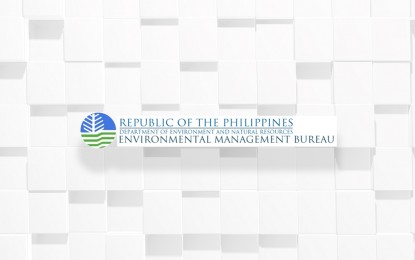
MANILA – The Philippines aims to secure Japan's assistance on safely disposing hydrochlorofluorocarbons (HCFCs) and hydrofluorocarbons (HFCs) from various industries nationwide.
Such assistance will enable the country to destroy HCFCs and HFCs without releasing these substances' gases into the air -- protecting the ozone layer and climate, noted the Department of Environment and Natural Resources-Environmental Management Bureau (DENR-EMB) OIC Assistant Director Vizminda Osorio.
"At present, the Philippines is coordinating with Japan's Ministry of the Environment regarding the possibility of having a destruction facility here in our country," she said during this month's Ang Tinig Klima program aired on August 27 for the 2021 observance of the annual International Day for the Preservation of the Ozone Layer (IDPOL) on Sept. 16.
Located in the atmosphere, she said the ozone layer is the mantle of ozone molecules shielding Earth from over-exposure to the sun's ultraviolet rays.
HCFCs are ozone-depleting substances (ODS) used in refrigeration and other applications but which the Philippines is phasing out in line with its commitment under the Montreal Protocol on Substances that Deplete the Ozone Layer.
Montreal Protocol is the international environmental agreement on preventing further ozone layer depletion by eliminating ODS use.
"It laid down mechanisms for control and phase-out of ODS," Osorio said.
HFCs are non-ODS alternatives to HCFCs but which have high global warming potential.
According to experts, there is a need for industry alternatives that will protect the ozone layer from further depletion without increasing global warming that is driving climate change.
Phasing down HFCs is aligned with Montreal Protocol’s Kigali Amendment which the Philippines and other parties to this agreement approved in 2016, noted the Philippine Ozone Desk (POD).
POD facilitates and coordinates ODS phase-out projects and policies in the country.
The Kigali Amendment seeks to help boost the fight against climate change by requiring parties to the Montreal Protocol to gradually phase down HFC production and use, the POD added.
The Philippines has set its HFC phase-down in 2024.
Osorio said work is already underway to provide safe storage for HCFCs and HFCs in the country.
"EMB, with the help of Pollution Adjudication Board, is building a storage facility in San Mateo Rizal for such substances," she said.
Recovered HCFCs and HFCs will be temporarily stored in that facility before being delivered to the destruction facility for these substances, she noted.
Industry stakeholders concerned regularly receive EMB's reminder to always properly manage and recover respective HCFCs and HFCs so these won't leak into the air, Osorio continued.
"We're also seeking alternatives that don't destroy the ozone layer and increase global warming," she said.
"Montreal Protocol - Keeping Us, our Food and Vaccines Cool" is the 2021 IDPOL theme, said UN Environment Programme.
In 1994, UN General Assembly designated Sept. 16 of every year as IDPOL to commemorate countries’ signing of Montreal Protocol in 1987.
Scientists’ discovery of a hole in the ozone layer has fueled international action on the matter, including the crafting of the Montreal Protocol.
Earlier, UN Secretary-General Antonio Guterres described the Montreal Protocol as “an inspirational example of how humanity is capable of cooperating to address a global challenge” and a “key instrument for tackling today’s climate crisis”.
As a result of international cooperation on the matter, he said the ozone layer "is healing". (PNA)
